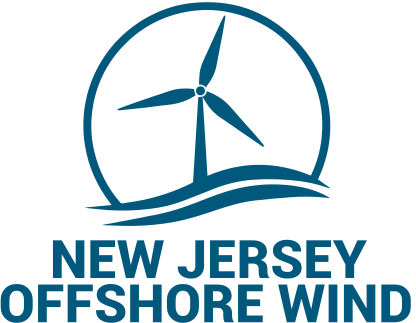Transmission & Infrastructure
How long will it take to build the offshore wind farms?
Planning for, assessing and constructing offshore wind farms takes approximately 10 years, offering multiple periods for public engagement and feedback throughout the process. Projects that are awarded by the NJ Board of Public Utilities (NJBPU) in 2024 are expected to be operational in the early 2030s.
What is the NJ Board of Public Utilities’ Prebuild Infrastructure Project?
To help bring responsibly developed offshore wind power to New Jersey homes and businesses, the Board of Public Utilities is inviting companies to build essential onshore electric transmission infrastructure. This includes cable vaults and duct banks (Prebuild Infrastructure) that will eventually enable multiple offshore wind projects, using direct current electric transmission cables, to be connected to our power grid. The planned path for this Prebuild Infrastructure starts at Sea Girt National Guard Training Center and ends at the Larrabee Collector Station, a new point of interconnection with the high voltage transmission system, in Howell, New Jersey.
Will my municipality receive any tax breaks? What funding through the state or the federal government is available?
The NJEDA has been awarded a $50 million Transmission Siting and Economic Development Grant from the U.S. Department of Energy to provide funding for local communities that will host onshore offshore wind transmission assets. The Transmission Siting and Economic Development Grant Program’s $50 million award will create numerous opportunities across New Jersey to stimulate the economy, help residents learn new skills through training programs, and enhance the quality of life in disadvantaged and vulnerable communities.
Has the BPU or NJ considered the hardships and monetary loss my municipality and local businesses will face during construction?
The Board of Public Utilities is evaluating Prebuild Infrastructure applications to ensure they are practical, have the least impact on communities and are aligned with its mission to ensure that safe, adequate, and proper utility services are provided at reasonable, non-discriminatory rates to all members of the public who desire such services. Further, to develop and regulate a competitive, economically cost-effective energy policy that promotes responsible growth and clean renewable energy sources while maintaining a high quality of life in New Jersey.
What mechanisms are in place to ensure these projects are finished on time?
The Board of Public Utilities will impose financial penalties related to project completion milestones to ensure accountability and timely project completion.
Will communities have input in the route?
Municipalities will have the opportunity to discuss routing options with developers when they present their Prebuild Infrastructure plans. The chosen developer must then communicate and work with municipalities and community groups throughout project design and permitting, from planning to completion.
Does the municipality have a say in which developer is picked, and will the amount/degree of town disturbance be considered when awarding these bids?
Although towns are not directly involved in the Board of Public Utilities’ solicitation review process, the Board is actively soliciting feedback from communities to best understand community concerns and to help identify the best solution. Developers must choose routes that minimize disruptions to local communities and the environment while also minimizing cost to ratepayers and still being technically feasible. The Board reviews each project’s potential impact on the community as part of the evaluation process.
How has the public been consulted about the Prebuild Infrastructure?
For offshore wind solicitations (including the Board of Public Utilities’ third offshore wind solicitation in which the Prebuild Infrastructure was first discussed), the Board offered the general public an opportunity to comment on the proposed project. The Board carefully considers all comments it receives. For example, community input was solicited during a public stakeholder meeting on December 13, 2022, with public comments accepted until December 29, 2022. Public comments were received through the Public Document Search tool. Then on November 17, 2023, following review of the bids received as part of the Third Solicitation, the Board separated the Prebuild Infrastructure, the transmission portion from the generation portion of the solicitation. The Board then opened a separate transmission solicitation for the Prebuild Infrastructure under Docket No. QO23100719. Dockets can be downloaded here: BOARD OF PUBLIC UTILITIES (state.nj.us)
Were other state and federal agencies involved in developing the Prebuild Infrastructure solicitation?
For the Prebuild Infrastructure, the Board of Public Utilities’ staff consulted with the New Jersey Division of Military and Veterans Affairs, the US Army Corps of Engineers, the New Jersey Department of Environmental Protection, and the New Jersey Division of Rate Counsel to ensure that important agency viewpoints also from a variety of perspectives are considered.
Are there cable landfalls and underground duct banks/electric infrastructure that are similar to this project and are already operational in other communities?
Underground electric infrastructure is common throughout New Jersey and the U. S. New Jersey has significant underground electric cable duct banks, especially in urban areas. Alternating current duct banks are used throughout the U.S. and abroad with more than 5,000 miles of existing underground transmission lines in the U.S. alone. While the specific locations and ratings of many high voltage electric cables are kept confidential for security reasons, public maps from the New York Independent System Operator and PJM Interconnection show that there are many existing multi-cable high voltage underground duct banks in heavily populated neighborhoods throughout New York and New Jersey. Direct current transmission lines are currently less common than alternating current transmission lines but have been operating in the U.S. since 1970
How will the Board of Public Utilities and New Jersey communicate about upcoming hearings and events?
We encourage everyone to join the Board of Public Utilities’ email list to receive updates about public meetings and events visit: https://nj.gov/bpu/about/contact/subscribe.html. Board public notices are available at: https://www.nj.gov/bpu/newsroom/public/. If you have any questions or concerns regarding Board hearings, contact our Ombudsman’s Office at Ombudsman@bpu.nj.gov.
Back
to top
 Official Site of The State of New Jersey
Official Site of The State of New Jersey